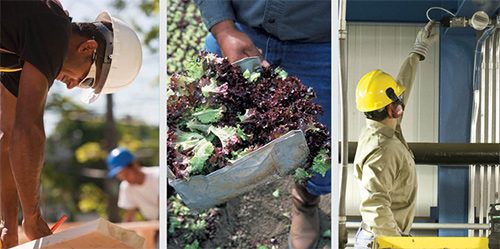Screening for safety
Assessing a contractor's safety performance

Awarding public contracts
Many construction contracts involve public projects. However, advocacy group Public Citizen claims that states often do not require contractors to meet safety criteria or put too much emphasis on lagging indicators such as EMRs and fatality numbers.
In a series of reports, the Washington, D.C.-based group examined construction fatality costs in Washington state, Maryland and California. More reports are expected, but of those three states, only California addressed safety in its prequalification system, and Public Citizen was not satisfied with the state’s criteria.
“I think the problem is that states and industry just rely on OSHA’s guidance and they don’t really step up and attempt to change the culture around safety and health in construction,” said Keith Wrightson, worker safety and health advocate for Public Citizen’s Congress Watch division and author of the reports.
He said states should be taking a more “progressive approach” by considering factors such as whether the contractor conducts job safety meetings, provides personal protective equipment and ensures workers receive extensive training.
Even if safety is considered during prequalification, state and local statutes often require the government to choose the “lowest responsible bidder,” which Philips said could work against safety interests. To produce a low bid, the contractor may cut back on safety or in another area.
Woods highlighted a related issue: The private sector has more flexibility to incorporate safety into the final selection process and make a decision that is not based on price alone. Conversely, some state statutes are written so that safety comes up only during prequalification – the contractor must meet the basic requirements, but safety is not considered in the final bid selection.
“That pushes against handling it in what I think is the best way, which is a relative evaluation,” Wood said. “I think it is more worthwhile to try to come up with some sort of system that provides a sliding scale. So rather than treating safety and health as a threshold qualification, it is best treated as an element in the decision, so that people who have ‘very good’ programs get an edge over people who have just ‘good’ programs.”
Protecting contract workers in all industries
Of the 4,609 workplace fatalities in 2011, 492 were contract workers, according to preliminary figures from the Bureau of Labor Statistics.
Advocacy groups say these temporary workers, commonly used in construction, farming and warehousing, are especially vulnerable to injuries because they typically perform risky work. Additionally, contract workers may lack formal education and English-language proficiency, and may not be given adequate safety education and training, according to a January report from the Washington-based advocacy group Center for Progressive Reform. CPR called on OSHA to take action to protect temporary workers, including requiring all employers to provide a minimum level of safety training and conducting enforcement “sweeps” in industries known to use a large amount of these workers.
In the opinion of Michael Wright, head of the Pittsburgh-based United Steelworkers’ Health, Safety and Environment Department, the organization that hires a contractor is ultimately responsible for ensuring a safe jobsite. However, he stressed that it does not let the contractor off the hook for protecting its employees. Under OSHA’s Multi-Employer Citation Policy, more than one employer (i.e., the owner and subcontractors) may be cited for violations of OSHA standards.
One issue Wright sees is that employers fail to extend safety rules to contractors. He referenced a steel company where employees were supposed to use non-sparking tools around flammable gases, but the same rule was not applied to contractors.
“We see examples every day where contractors are not as well-protected as the regular workforce,” Wright said. Either before the final selection is made or after a contractor is selected, the company hiring the contractor should require a job safety analysis, Wright said, and find out what type of safety personnel and personal protective equipment the contractor intends to use.
Noting that injuries could lead to civil lawsuits, Wright said it is in the contracting company’s best interest to provide a safe environment for every person onsite – from regular employees to contractors to deliverymen.
“They can’t avoid liability by saying this is all in the hands of the contractor,” he added. “If they’re the ones that create the hazard, they’re the ones that are going to be held accountable.”
– AJ
Post a comment to this article
Safety+Health welcomes comments that promote respectful dialogue. Please stay on topic. Comments that contain personal attacks, profanity or abusive language – or those aggressively promoting products or services – will be removed. We reserve the right to determine which comments violate our comment policy. (Anonymous comments are welcome; merely skip the “name” field in the comment box. An email address is required but will not be included with your comment.)

